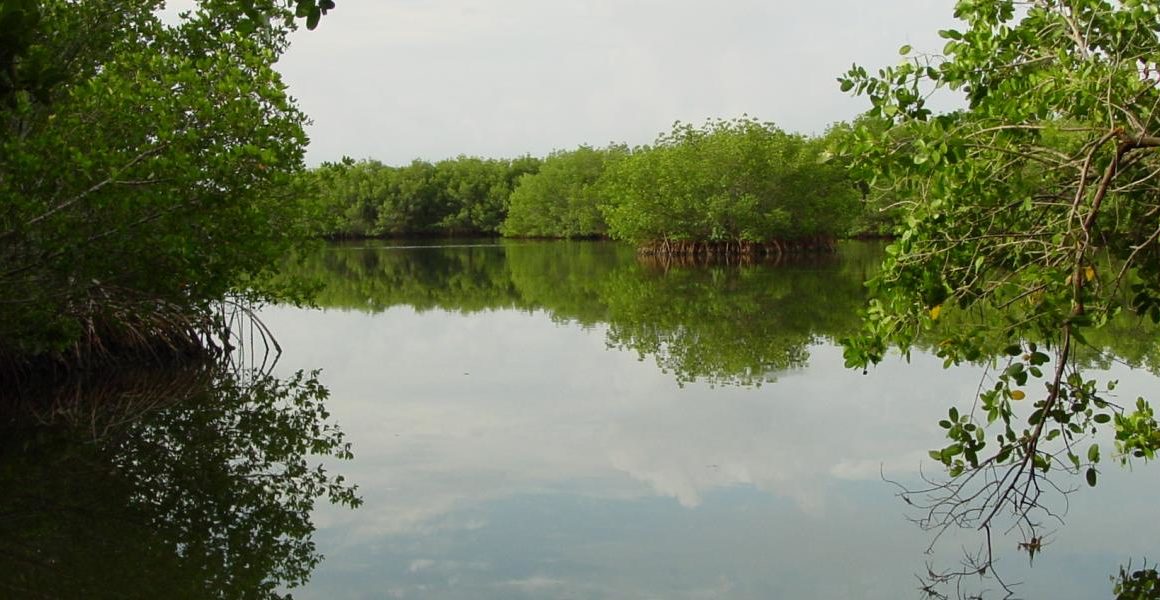A Day At Cockroach Bay
By Dakin and Megan White
We weren’t sure exactly what to expect when we first heard about a field trip to Cockroach Bay. We had been learning about estuaries and why they are important in our science class at Kingswood Elementary School – but cockroaches???
We learned a lot of awesome things, starting with the fact that historians think that Cockroach Bay was actually named for horseshoe crabs that congregate there, not the horrible bugs that sometimes hang out in our backyard. Still, it’s weird that anyone would think a horseshoe crab was a cockroach because they looked like 3-D stingrays to us.
It was a very cold January morning when 32 students from Mrs. Burke’s fifth-grade class took a bus to Cockroach Bay as part of Hillsborough Community College’s bay studies program. It was the most beautiful sight we’d ever seen – a brackish-water bay with a huge white boat on the beach waiting to take us to a small island.
We were lucky and got to ride out on the first boat trip, because only 12 kids could go at one time. We went in the boat with two expert biologists, Pete Rossi and Pat Cannizzaro, who told us about where we were going and answered all our questions. The ride to the island was so peaceful, we could hear the waves splash against the side of the boat.
When we got to the island, we walked through nice soft sand and down a path that ran through trees called mangroves. We learned that mangroves are very important because they provide habitat for many kinds of animals, including fish, birds and crabs. There are three kinds of mangroves growing in Tampa Bay. Red mangroves grow in the water and black mangroves grow at the edge of the water with their roots growing up out of the ground. White mangroves grow further inland.
After learning about mangroves, we were asked to shovel sand into a sieve to see what was living on the beach. We dug a mound, then shook the sand through the sieve and discovered comb jellies, horseshoe crabs, blue crabs and even stone crabs. We also saw baby oysters and barnacles.
We very quickly learned not to touch blue crabs because they pinch hard! The comb jellies are jellyfish that don’t sting. There were some on the beach and some in the water, and it was really cool to touch them. They were hard to see, though, because of their camouflage.
As you might expect, we saw lots and lots of horseshoe crabs. You can tell if they are male or female because the male horseshoe crab has claws in the shape of a fist. Their tail looks more like a nose so they look like they’re going backward all the time.
We had lunch on the island, and on the way back, Pete put a 10-foot net called an “otter trawl” in the water and pulled it behind us. He asked the last two kids on the boat to pull it in, but it was too heavy for them to handle. We were right behind them so we were really glad when we were asked to help. We tugged and tugged at that net but it wouldn’t budge. Pete and two other men started pulling, but still no luck. That’s how heavy the net was because it was full of really slimy algae. Finally, Pete let some of the algae out and the three men could get the net aboard.
We learned that algae and phytoplankton produce more oxygen than all the plant life on earth. They’re tiny organisms that make their own food using energy from sunlight and producing oxygen as a by-product. The process is called photosynthesis. If we kill all the plankton, the oxygen we breathe will go away too.
When we looked in the net, we saw that we had caught a sand dollar, a sea horse and a crab. We learned that when a sand dollar is alive, it’s gray, but when it’s dead, it turns white. Sand dollars move across the ocean floor with tiny gray spines that fall off when they die, so that’s why they turn white.
The seahorse was awesome. We had seen them before at the aquarium, but never expected to see one in the wild. When we got home, we looked up seahorses on the Internet. We found out that nobody knows how many seahorses live in Tampa Bay, but there probably aren’t as many as there used to be. They live in seagrass beds and their habitat has declined over the past 50 years. Seahorses are very unusual because the male gets pregnant and takes care of the babies until they are born. Tiny baby seahorses are often eaten by other species if they don’t have good hiding places.
When we got back to Cockroach Bay, we got to use a seine, a special kind of net with two poles a long way apart with a net inside. Two kids held each of the poles in shallow water and slowly walked up the beach so they didn’t scare off the fish. We caught comb jellies and a baby fish.
When it was time to leave, we ran to the bus. Our feet were wet and it was so cold, our toes were getting numb. We had a lot of fun though — it was a wonderful experience and we learned so much. We’ll never forget seeing the baby seahorse and touching the comb jelly.
